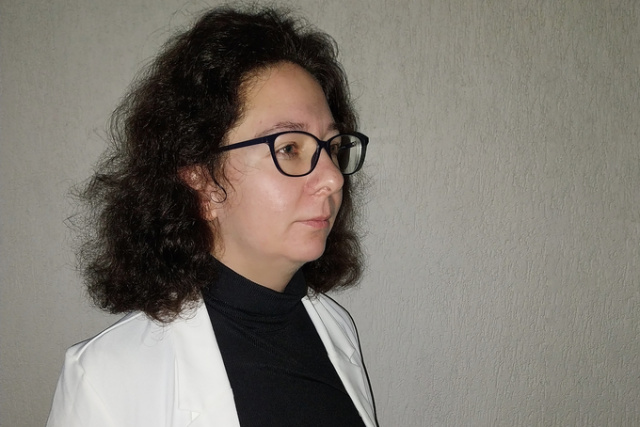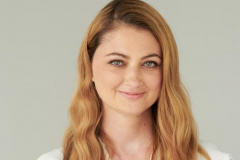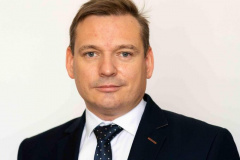Featured Lendület Researcher: Tekla Etelka Gráczi
Various neurological diseases and conditions often affect a person’s speech. Tekla Etelka Gráczi, Senior Research Fellow at the HUN-REN Research Centre for Linguistics’ Institute for General and Hungarian Linguistics, and her Momentum research group are investigating this effect in subjects with Parkinson’s disease, Down syndrome and multiple sclerosis. Their research examines the acoustic characteristics of spoken sounds and the mechanism of sound production.
The sounds produced by neurotypical speakers (that is, those whose nervous system functions are typical of the majority) and neurodivergent speakers (those whose nervous system functions are atypical), as well as many other characteristics of their speech, may differ from each other. This is because the neural disease or condition causing the atypicality of the latter group may affect the brain’s processing and production of speech.
The effect of nervous system problems on speech
Most neurological problems manifest themselves in certain characteristics of speech.
 Tekla Etelka Gráczi
Tekla Etelka GrácziThese phenomena are being studied by Tekla Etelka Gráczi, Senior Research Fellow at the Institute for General and Hungarian Linguistics at the HUN-REN Research Centre for Linguistics, and her colleagues with the support of the Momentum Programme. The research programme will examine the speech of people affected by different types of neural disorders, as each condition can affect speech in different ways.
The research team will primarily examine three patient groups: people with Parkinson’s disease, those with multiple sclerosis and those with Down syndrome.
“In Parkinson’s disease, motor functions, that is, functions related to movement, are primarily affected, which manifests itself, for example, in difficulty initiating movement, tremors and muscle stiffness, all of which affect speech. Down syndrome not only affects the brain’s control of speech production, but also involves physiological abnormalities in the speech-forming organs. In contrast, in multiple sclerosis, the symptoms, including those affecting speech, are varied and much more individual, as the disease itself can occur in different areas of the white matter,” said Gráczi, the research group leader. “We would like to supplement previous studies of these neuroatypical speaker groups with spectral phonetic contrast analyses. In Hungary, research has so far mainly focused on temporal phonetic studies and speech technology (speech recognition and speaker group identification). Our research adds new linguistic and phonetic perspectives to these studies.”
Telltale signs
Amongst the temporal (time-related) characteristics of speech, researchers measure things like tempo, pauses and the length of continuous speech segments. Spectral phonetics deals with the frequency characteristics of speech as a complex vibration. For example, it examines how the vocal cords vibrate, how regular their vibrations are, and what intensity patterns characterise the frequency components of individual speech sounds. The speech of neurodivergent speakers differs from that of neurotypical individuals in both articulation and acoustics. “Articulation is the production of speech, the functioning of the speech-forming organs, such as the movement and position of the tongue. Acoustics is the projection of articulation as sound vibration,” continued Gráczi. “Since articulation and acoustics are complexly interrelated, we want to examine both.”
Foreign studies have established that the vowel space of the groups of speakers being studied is narrower than that of neurotypical speakers. This means that the more open vowels in the speech of these groups of speakers are more closed than those of neurodivergent speakers, but at the same time they are characterised by greater variability.
To date, there has been little research into how patterns that differ from neurotypical pronunciation appear in the speech of neurodivergent speakers in terms of linguistic and phonological contrasts, so the Momentum grant team is focusing on examining these.
Phonological contrasts are oppositions where, for example, two sounds differ by a single feature, yet function as distinct elements within the sound system of a given language. Examples include vowel length (for example, i-í or a-á) or the voicing of certain consonants (for example, z-sz or g-k). The question that arises is whether these and similar contrasts persist, to what extent these are affected during speech by individual speakers, and what connections these contrasts show at the group and individual levels.
The speech of neurodivergent individuals can vary significantly from one person to another, just as their conditions differ and can affect different aspects of speech production. “We will make recordings with the speakers in which we place the characteristics we want to examine in carrier sentences, and the speakers will read these sentences aloud. We’ll record the speech with a microphone, which allows us to examine the acoustic structure of the speech,” said Gráczi. “At the same time, we’ll also make articulation recordings, which allow us to examine speech production. During this process, we use tongue ultrasound to observe the movement of the tongue during speech. We place an ultrasound sensor attached to a helmet under the speaker’s chin, and they read the sentences aloud. This allows us to examine the movement and position of the tongue.”
According to the researcher, mapping contrasts can provide a wealth of information about speech planning and execution. In addition, the results could be useful in practical speech support and development, as speech therapy assistance is not yet available to all speaker groups in Hungary. A better understanding of the speech problems of neurodivergent people will enable the development of targeted speech therapy programmes.


_680_454_1749540940_fill_240x160.jpg)


_680_454_1733819474_fill_240x160.jpg)


